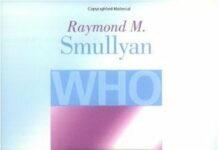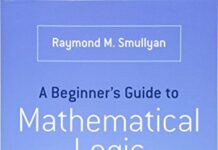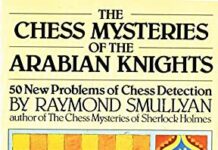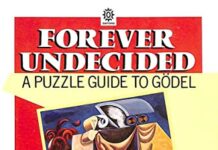
Ebook Info
- Published: 1992
- Number of pages: 160 pages
- Format: PDF
- File Size: 1.92 MB
- Authors: Raymond M. Smullyan
Description
Kurt Godel, the greatest logician of our time, startled the world of mathematics in 1931 with his Theorem of Undecidability, which showed that some statements in mathematics are inherently “undecidable.” His work on the completeness of logic, the incompleteness of number theory, and the consistency of the axiom of choice and the continuum theory brought him further worldwide fame. In this introductory volume, Raymond Smullyan, himself a well-known logician, guides the reader through the fascinating world of Godel’s incompleteness theorems. The level of presentation is suitable for anyone with a basic acquaintance with mathematical logic. As a clear, concise introduction to a difficult but essential subject, the book will appeal to mathematicians, philosophers, and computer scientists.
User’s Reviews
Reviews from Amazon users which were colected at the time this book was published on the website:
⭐Unlike most other popular books on Godel’s incompleteness theorem, Smulyan’s book gives an understandable and fairly complete account of Godel’s proof. No longer must the undergrad fanboy/girl be satisfied in the knowledge that Godel used some system of encoding “Godel numbers” to represent a metamathematical statement with a mathematical one. The power of the proof can now be yours!Seriously though, among the large family of well written accounts of Godel’s theorem, including Godel, Escher, Bach, as well as Nagel and Newman’s book, Smulyan’s is the most direct and serious account, and accessible to anyone with the mathematical maturity to handle an advanced level undergraduate math class.
⭐I am happy to read the book, but the binding doesn’t seem to close properly. The cover sticks outward and doesn’t properly close.
⭐Well. This is the book. Read this instead of, or before you read Goedel�s paper. Within 20 pages you will know the �trick� that Goedel used. It�s a beauty, but it is far easier to see it under Smullyan�s tutelage than by coming to the classic paper cold, since Goedel uses a more difficult scheme to achieve his ends. Much work has been done since 1931, and we get the benefit of the stripping-down to essentials that such as Tarski (and Smullyan himself) have contributed.The book has much of interest to those who wish to pursue the subject of the incompleteness and/or consistency of mathematics, or to come at Goedel from a number of angles. For me, though, the first 3 chapters were enough. I just wanted to find out how K.G. did what he did. Now I know, and I know where to go if I need even more.The exercises are helpful to keep you on track and test your understanding. They also contribute materially to the exposition. A stumbling-block for many readers will be the extremely abstract nature of the discussion, and the new notations and definitions that constantly come at one. Viewing numbers as strings and strings as numbers (and knowing when to switch from one view to another) will be confusing at first. This is the hard part: what Goedel did, in essence, is demonstrate that one can view proofs in two ways � as numbers, and as strings of characters. As in viewing an optical illusion, it is sometimes tough to hold the proper picture in mind.Smullyan�s book �First-Order Logic� is enough preparation for this work. One must here, even more than there, keep straight the difference between the �proofs� that are part of the subject matter (and so are strings of characters), and the proofs we go through that verify facts about these strings. Before we started reading this book, of course, we had some informal sense that we were going to prove something about proofs. What we are REALLY doing, though, is proving something about �proofs�. You get the picture. Goedel must have been a lot of fun at parties.
⭐Raymond Smullyan is a logician that I admire much. This book is very good but contains many typos and mistakes. For example, in p.31, the definition of xPy does not work as it is not able to account for 0P305. The definition should be corrected as:xPy iff There is z not greater than y (zBy and xEz). Similar mistakes can be found elsewhere. And this book thus requires another edition for the coorection of typos and mistakes.
⭐In a series of increasingly rich structures, Smulllian takes you to Godel’s Incompleteness Theorem for Peano Arithmetic with exponentiation. No corners cut – it’s all completely rigorous. you get there by page 36.
⭐Great book.
Keywords
Free Download Godel’s Incompleteness Theorems (Oxford Logic Guides Book 19) 1st Edition in PDF format
Godel’s Incompleteness Theorems (Oxford Logic Guides Book 19) 1st Edition PDF Free Download
Download Godel’s Incompleteness Theorems (Oxford Logic Guides Book 19) 1st Edition 1992 PDF Free
Godel’s Incompleteness Theorems (Oxford Logic Guides Book 19) 1st Edition 1992 PDF Free Download
Download Godel’s Incompleteness Theorems (Oxford Logic Guides Book 19) 1st Edition PDF
Free Download Ebook Godel’s Incompleteness Theorems (Oxford Logic Guides Book 19) 1st Edition



